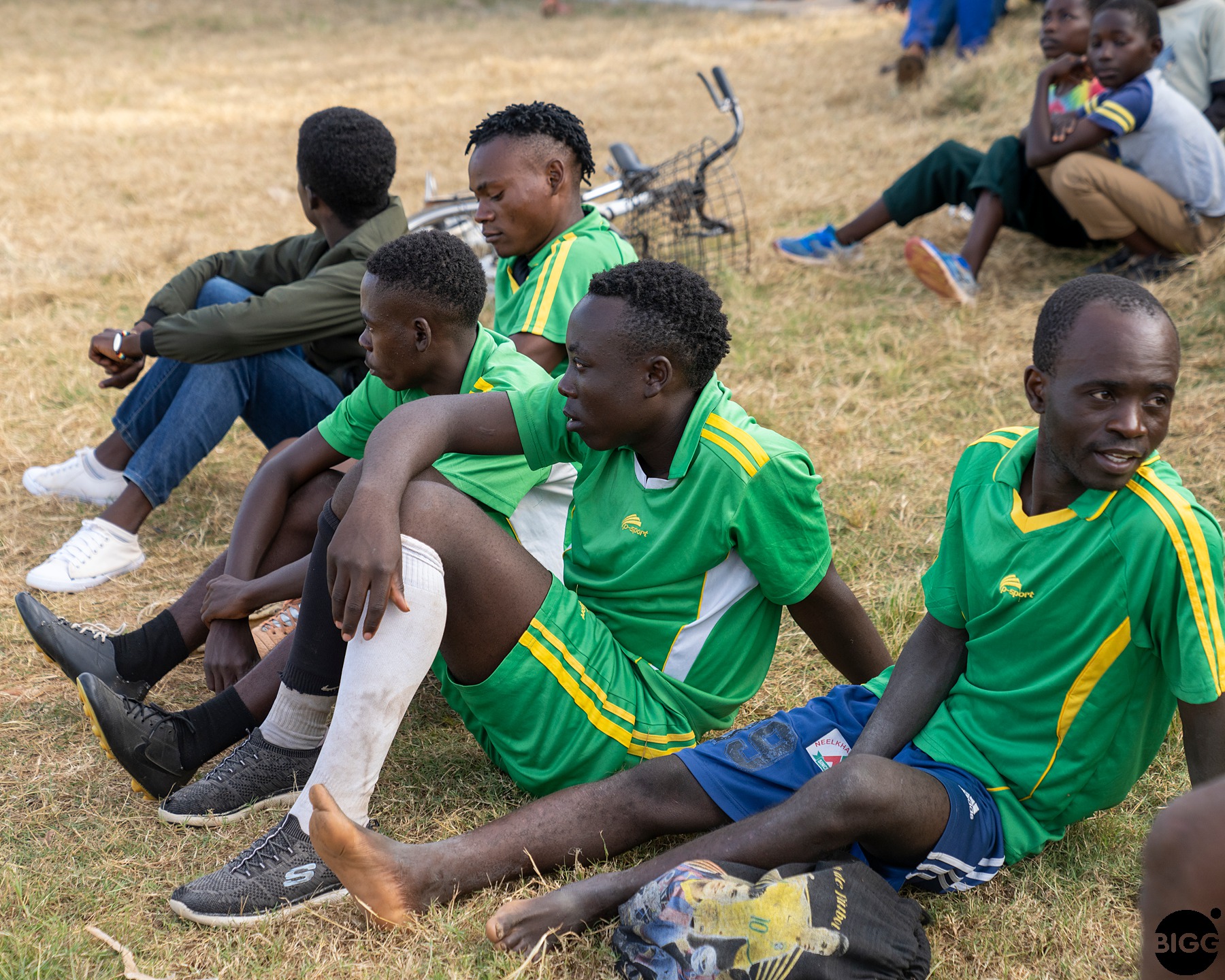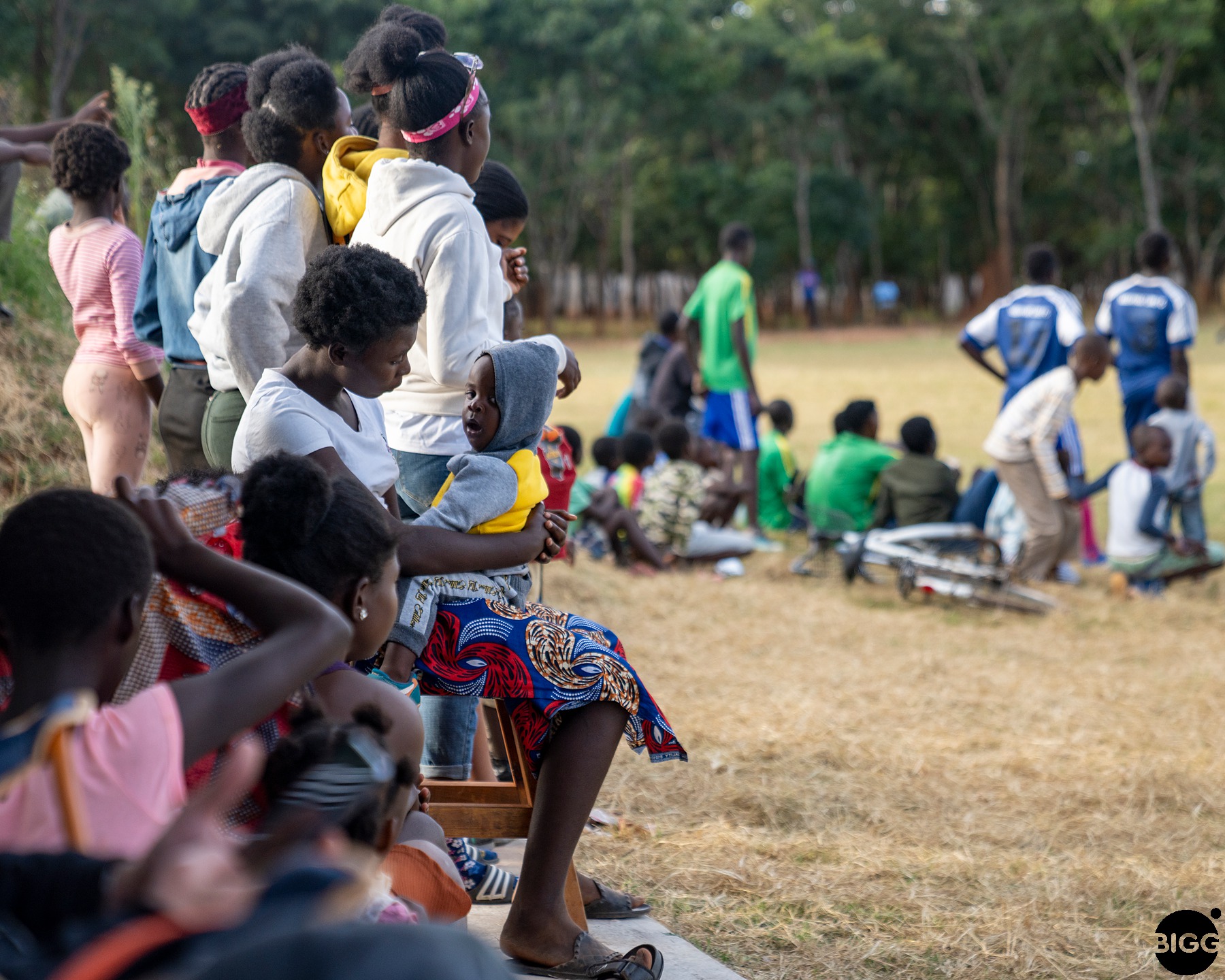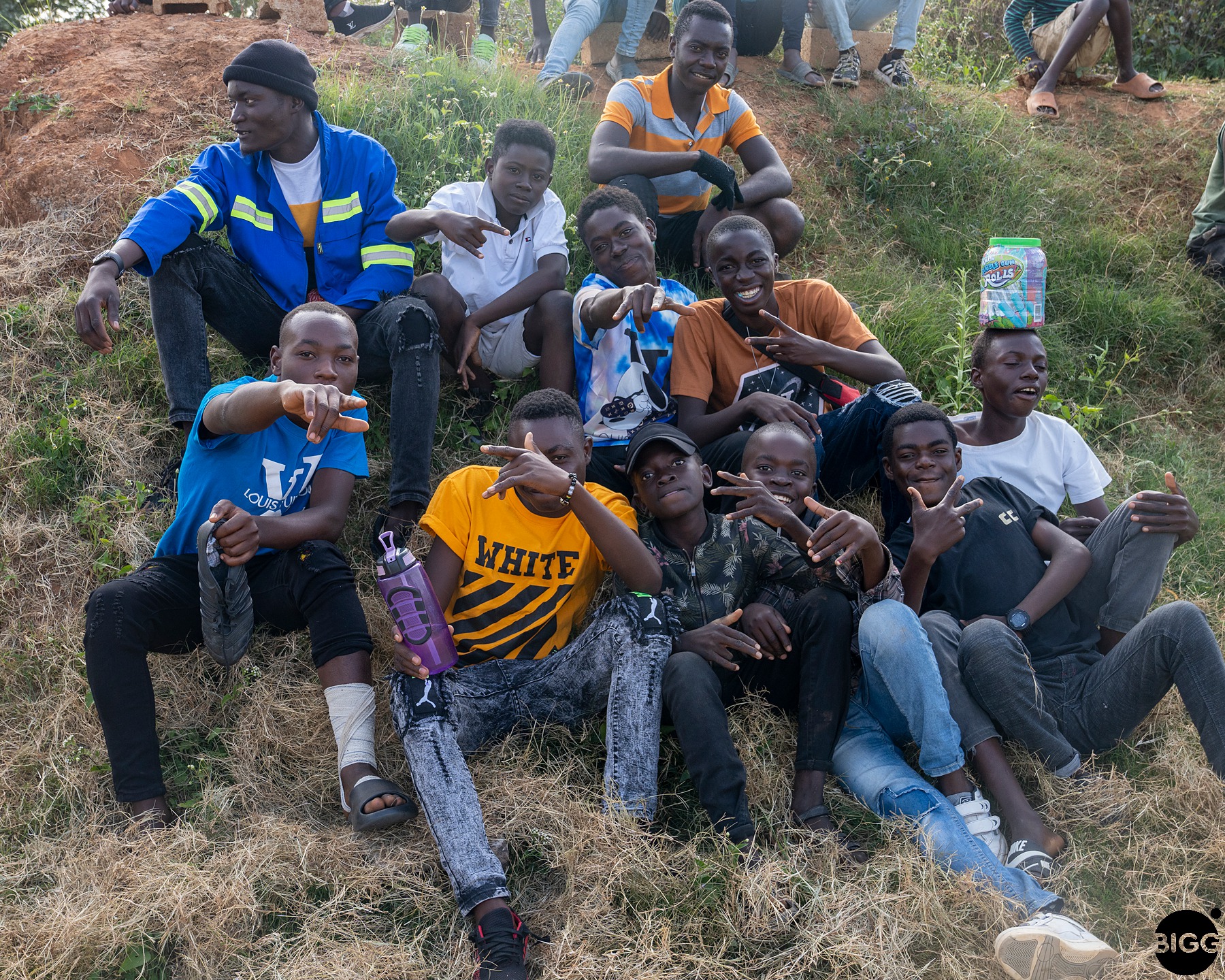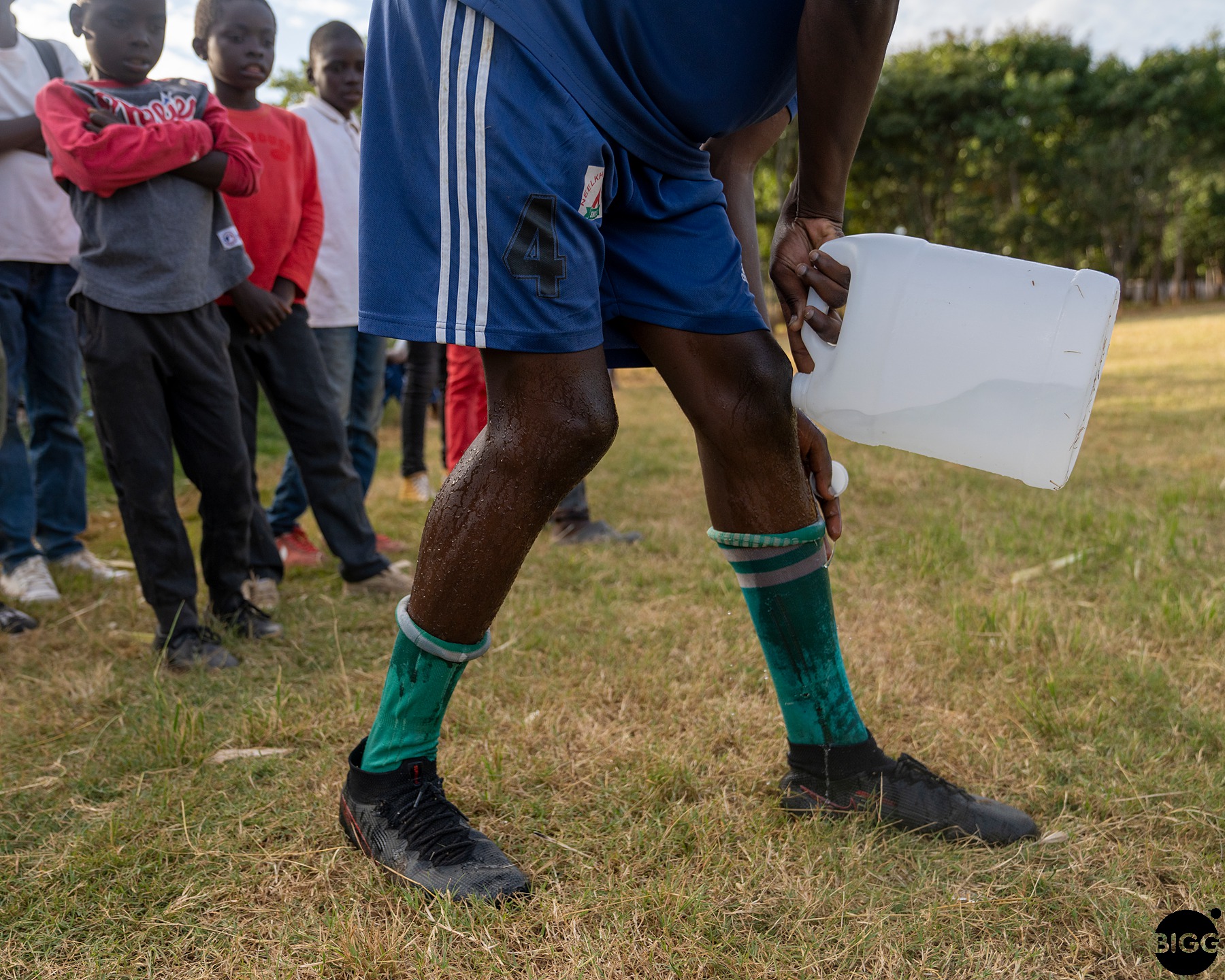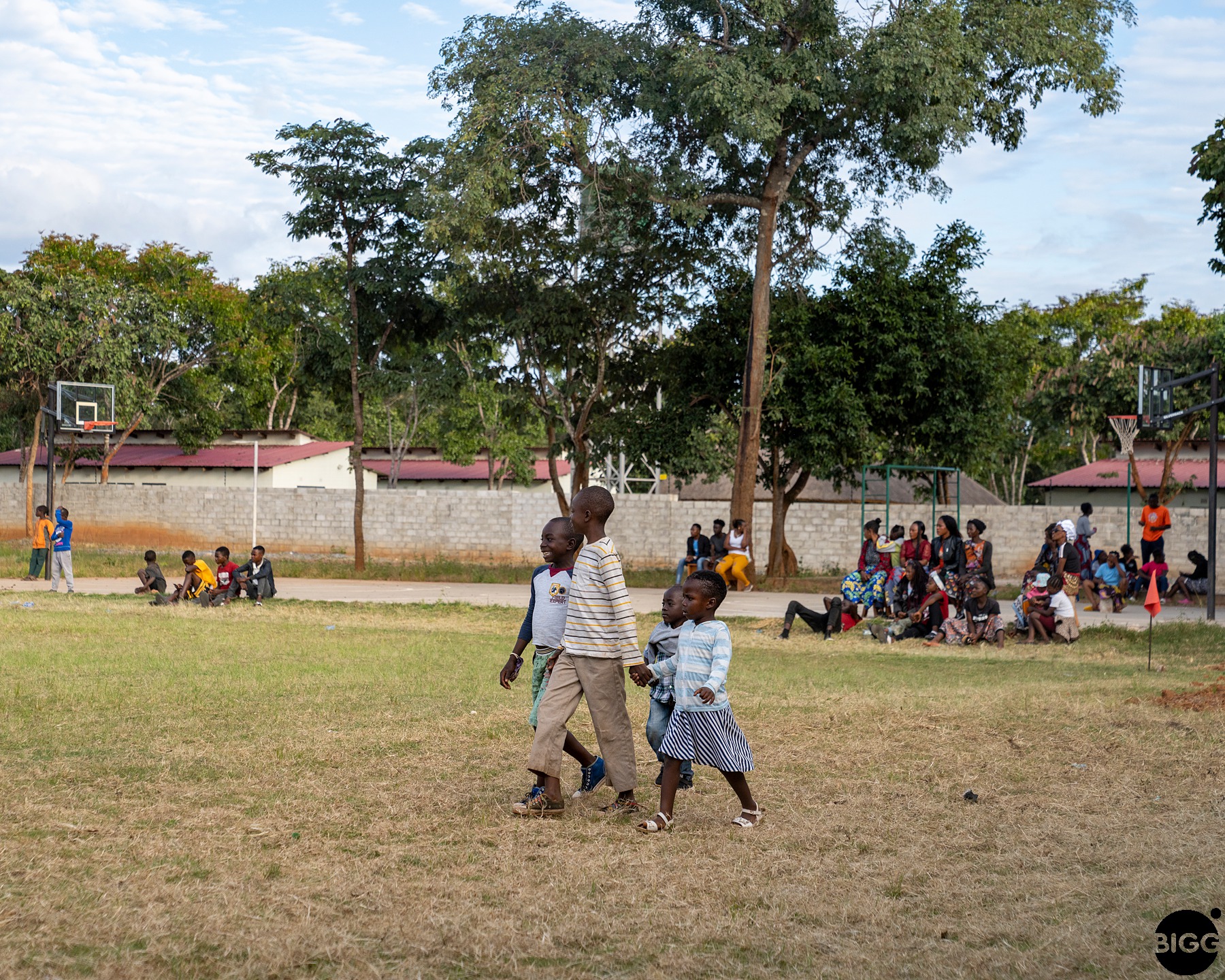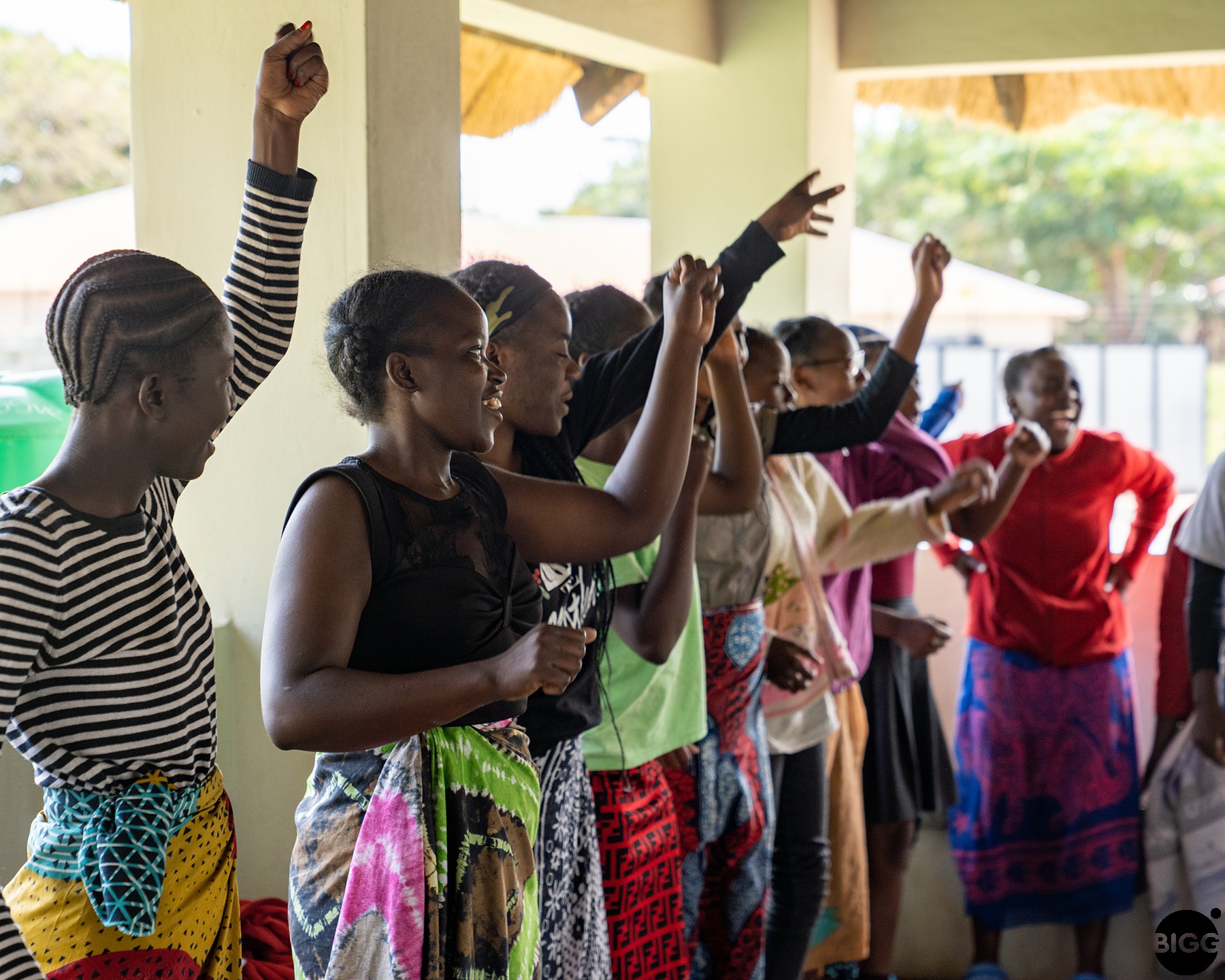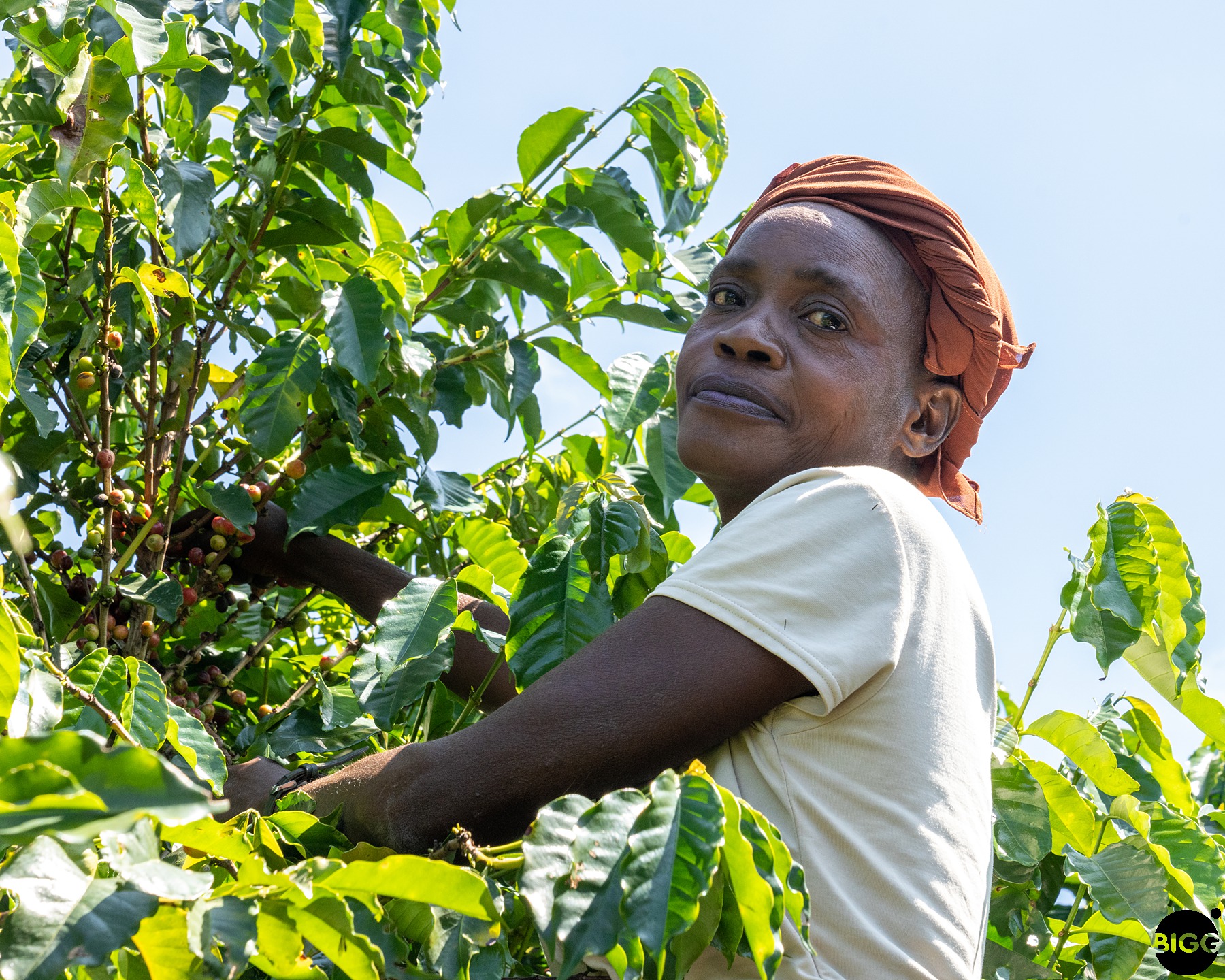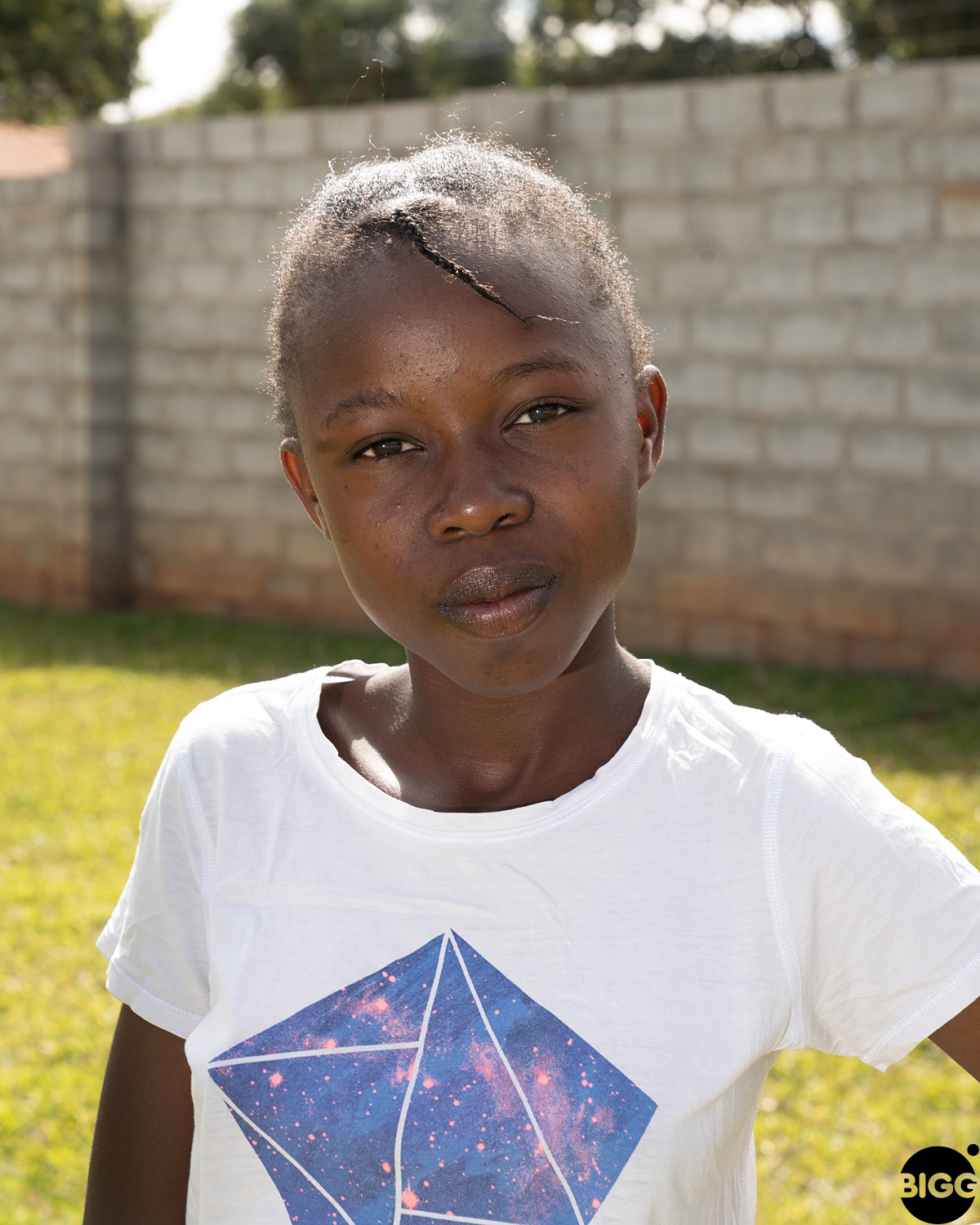By Michelle Fish
It was a hot Zambian summer afternoon in 2018. Bob and I had been flying for more than 30 hours on little to no sleep. We were rumpled and sticky by the time we piled into the back of Davies Chipoya’s land cruiser at the N’dola airport. And we were a little dazed, heading into a great unknown… our first visit to Africa, our first visit to an orphanage, and definitely our first visit to a coffee farm that had been started by an orphanage.
Once we reached the Living Hope campus, Davies led us to the Insaka – a large, round, open sided hut in the heart of the compound. Insaka is a Bembe word (the local Zambian dialect) that describes a place of wisdom where knowledge is shared. I remember being grateful for the shade and the gentle breeze.
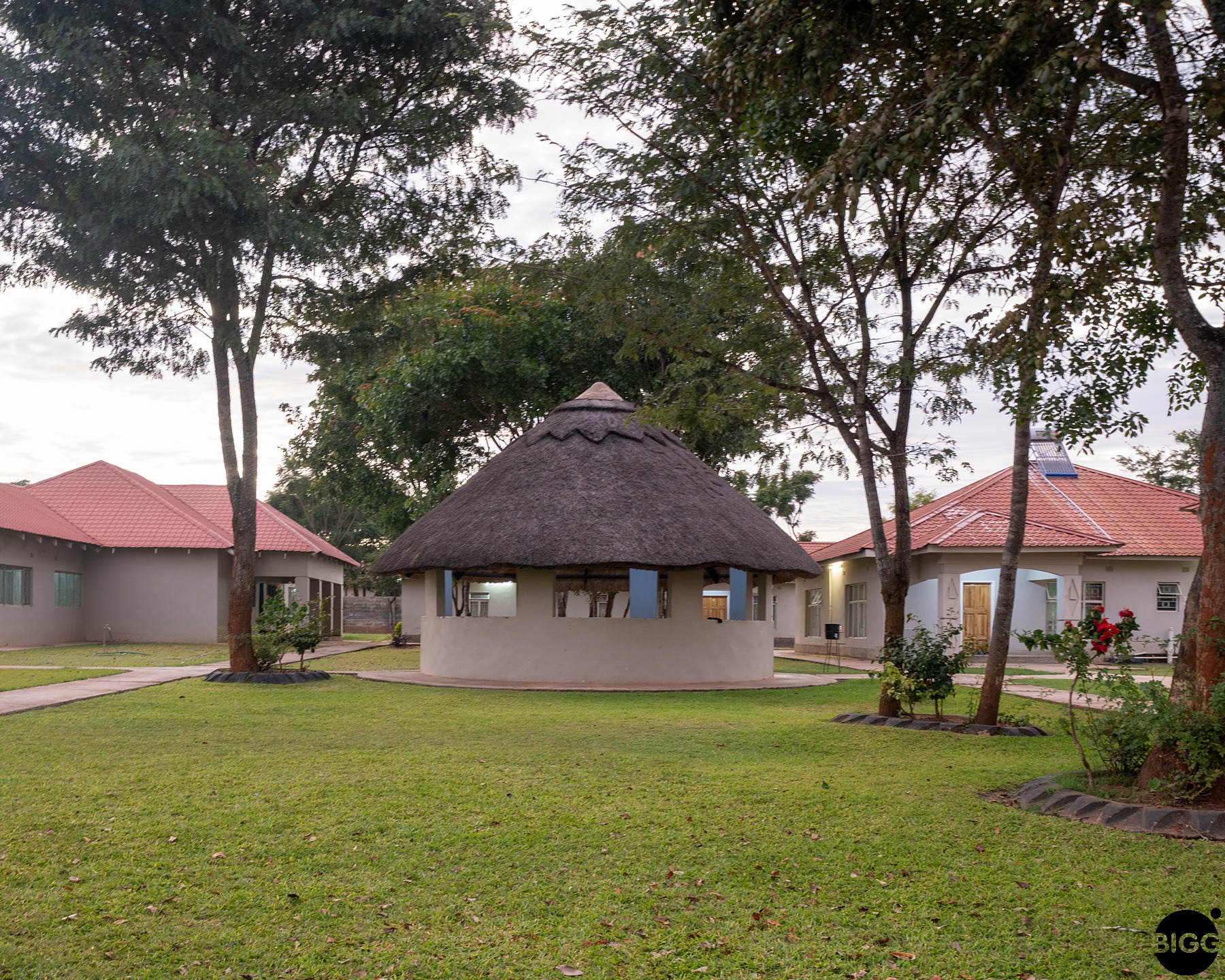
The Insaka in the heart of the compound.
Soon, a long line of children of various ages entered the hut, accompanied by several older women in brightly colored dresses. The children were quiet, a few of them shyly glancing at the two disheveled strangers in their midst. And then, one of the older girls began to clap, and they started to sing.
It was one of the most surreal (in a good way) greetings I have ever experienced. There was such joy in those voices, such power. If hope could sing, that’s what it would sound like. You can see a clip of that first meeting here.
There were 36 children singing in the Insaka that day. Over the last four years, I have thought of them often and wondered how they were doing.
Hello Again
Now, fast forward to May of 2022, and once again we were on a plane landing in N’dola. This time, we were coming in on a much shorter flight from Kenya. Less disheveled, better rested, and with company.
Our traveling cohort included Jorge Ferrey Machado from our Farm-Direct Partner the El Recreo Coffee Estate in Jinotega, Nicaragua. Also, ONE BIGG ISLAND IN SPACE’s favorite photographer, Kim Zahnow. And our dear friend Nathan Havey, who is one of the leading intellectual lights behind the conscious capitalism movement and also a principal in Havey Pro Cinema.
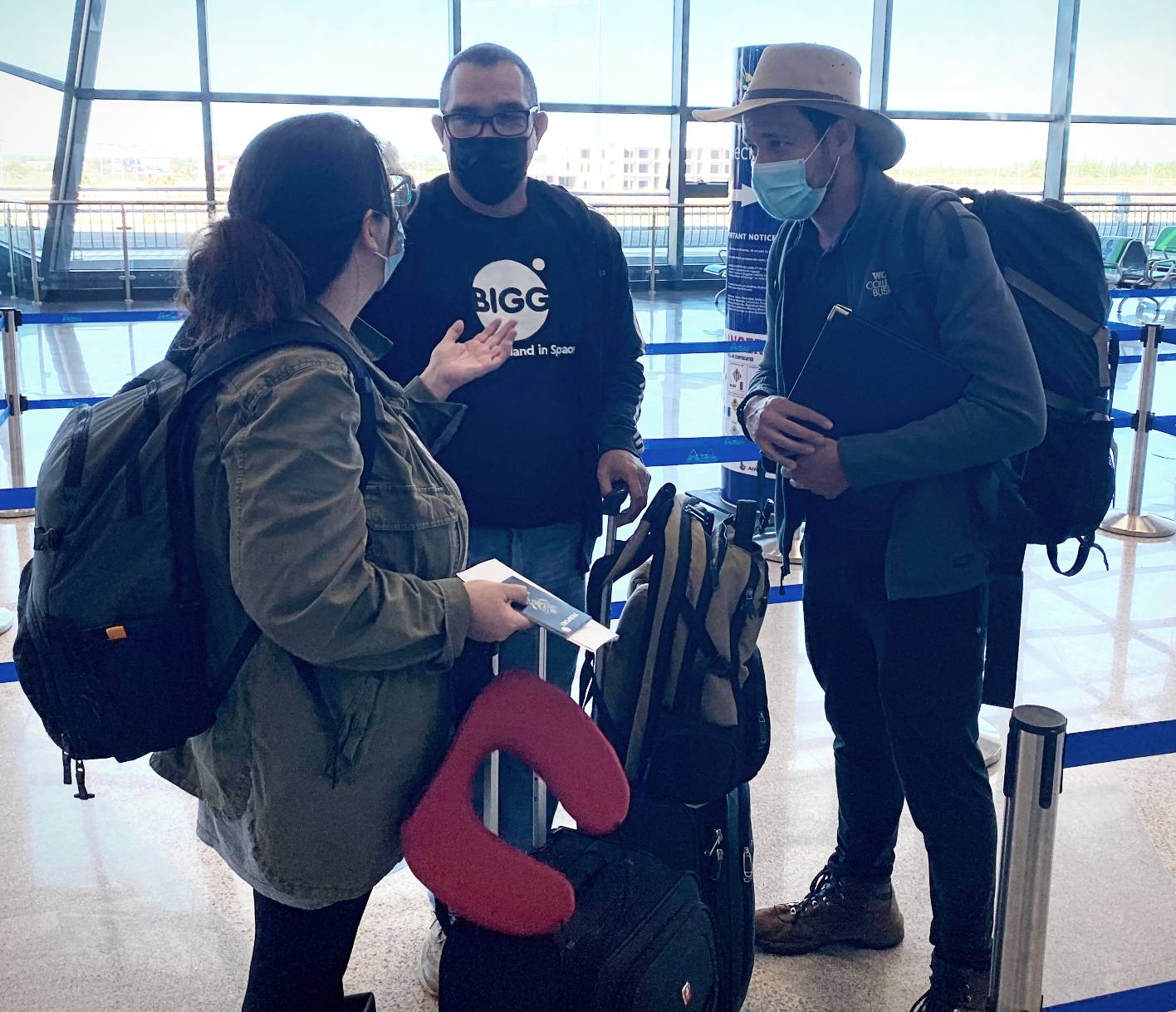
L-R: Kim Zahnow, Jorge Ferrey Machado and Nathan Havey
The sun was just setting as we arrived at the Living Hope campus. Once again, a long line of children of various ages streamed out into the lawn. This is what we saw.
Although the song of greeting was different, and we were standing in the lawn rather than in the Insaka, the joy in the voices was the same.
Where We Slept
Our first night at the orphanage was momentous, both for us and for our hosts. We were the first “outsiders” to actually stay on the compound, in “apartments” that used to house the children and the housemothers.
Bob and I stayed in a room that has been converted into a coffee lab with a bedroom attached. Jamie Flowers, Living Hope’s Director of Ministry Operations, uses it to roast and package batches of the farm’s coffee that they sell locally.
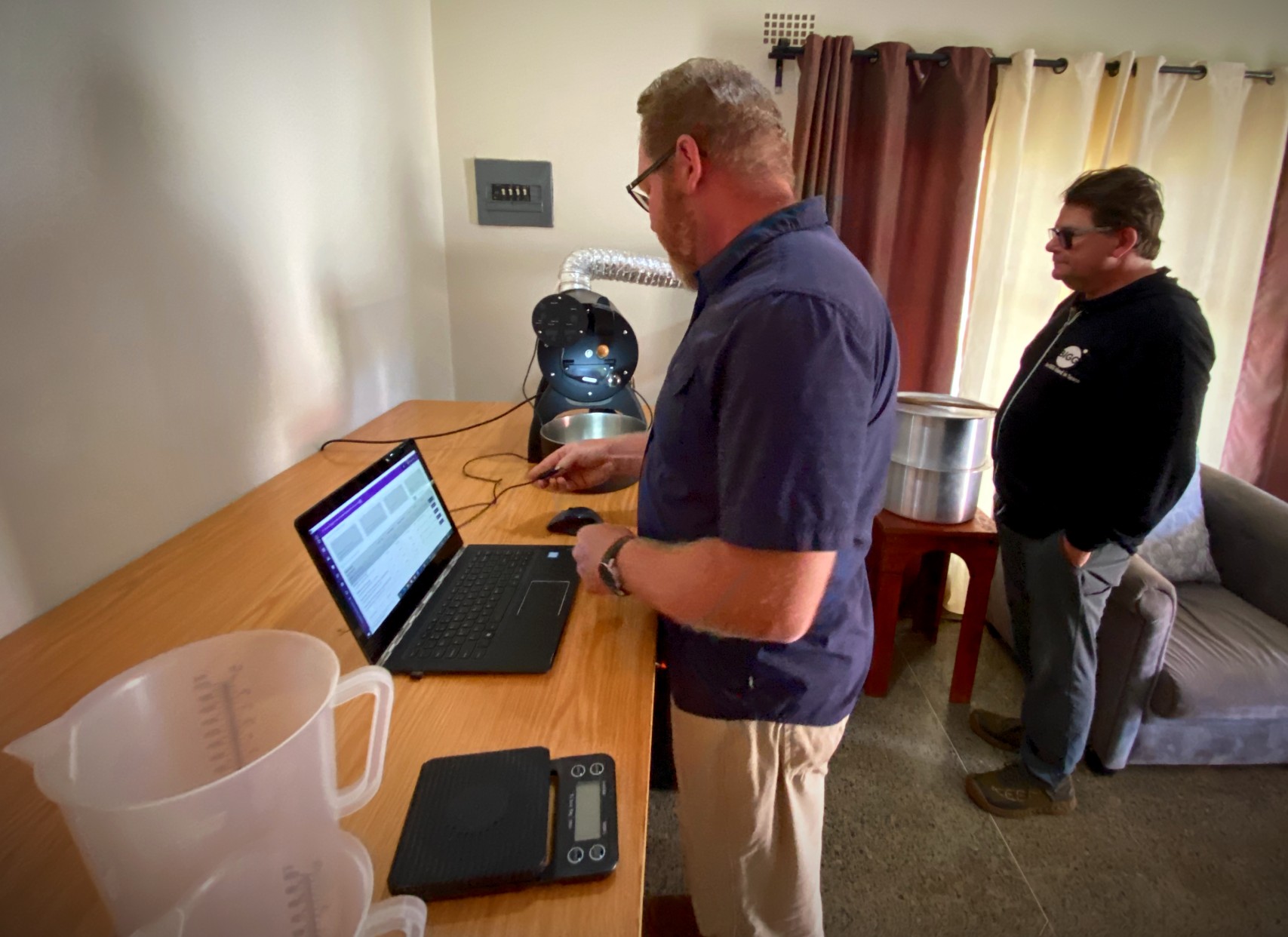
Jamie Flowers showing Bob the coffee roasting set-up.
Two other apartments have been transformed into guest quarters that can accommodate visitors. Kim had one, and Jorge and Nathan shared the other. Theirs had a full kitchen and a living area where we would gather each night to debrief.
In prior years, visitors stayed at a nearby hotel. Now, when the annual mission trips resume, they can stay on the compound. Which means that they, like us, will get to share their daily meals with the children and the housemothers. And, if they’re lucky, they’ll get to hear the happy sound of the girls singing themselves to sleep at night.
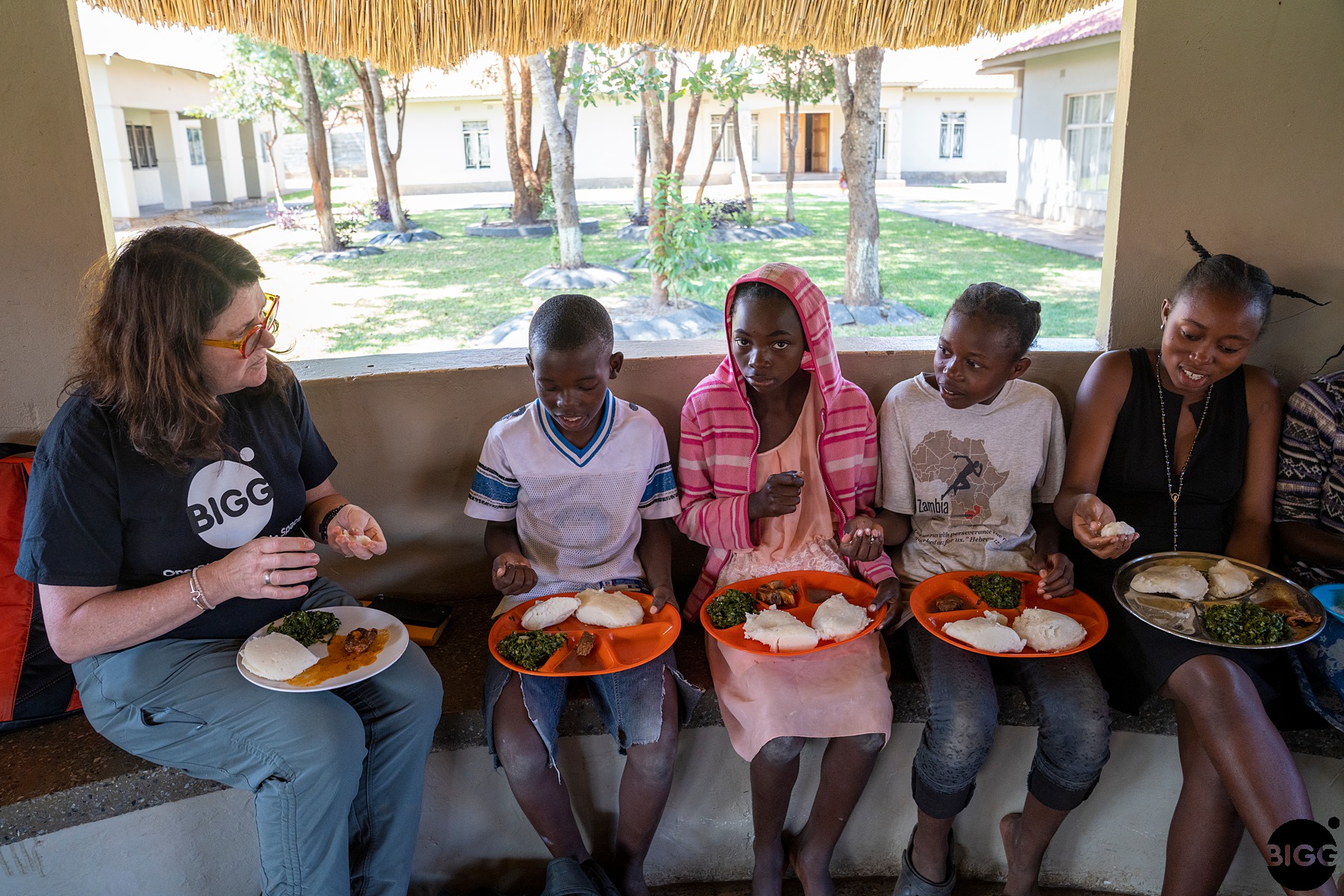
Building
So where did the kids go?
When we last visited the orphanage, plans were already underway to build out two sections of the property for new housing. There is a girl’s side, and a boy’s side, each with identical amenities. Both are walled compounds, with a guarded gate. Both are built around a central Insaka that the kids can use for meetings, or studying, or just hanging out.
Each unit can house 8 children and one housemother and her assistant. Although the rooms for the children are still set up in dormitory style, they are built around a central living room and kitchen. The feel is very homey and cozy, with comfy seating and a dining room table where kids can gather.
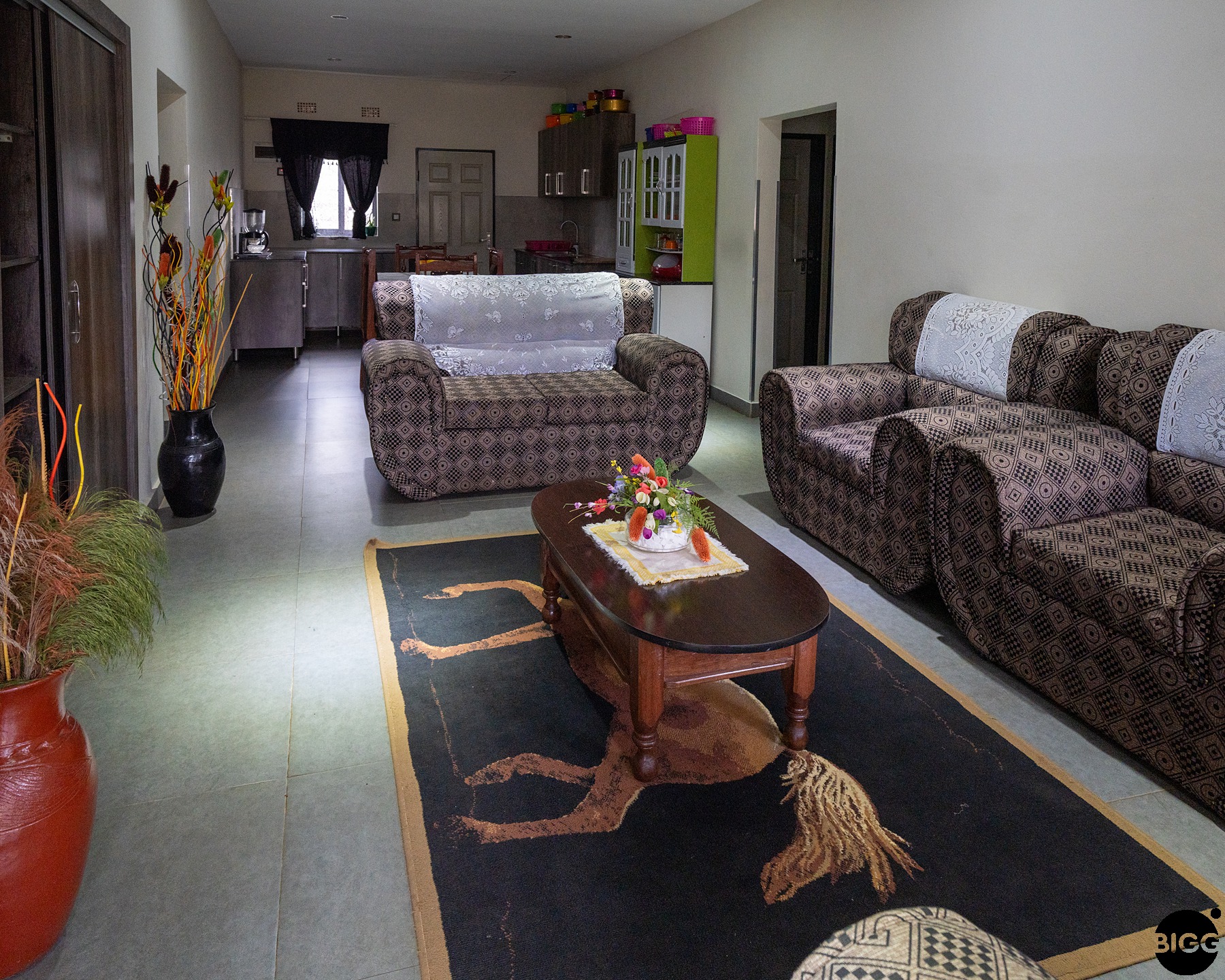
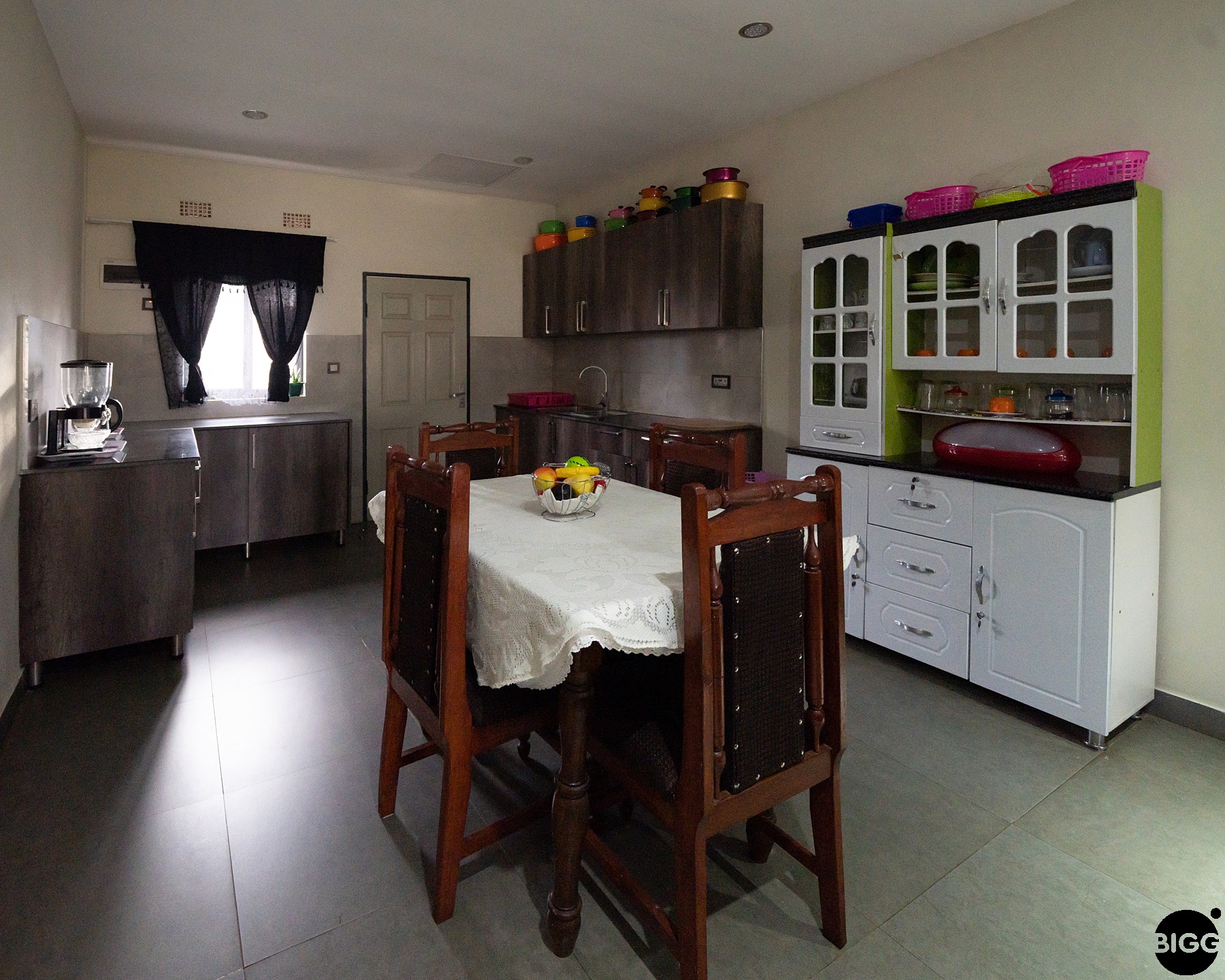
Construction on three of the planned seven units on the girl’s side was completed during COVID. They moved into their new digs in December of 2021.
While we were there, we watched as several of the girls played a complicated (and very entertaining) name game on the poured foundation of what will one day soon be another unit. When fully completed, the orphanage will have the capacity to house 112 children (eight per house). Currently, there are 38 children and 8 house mothers living on the compound.
The School
In 2010, Davies Chipoya, Kim Cooke, Lee Davies and the Leadership Team from Living Hope, got the idea to build a school on the compound that would be both for the orphans, and for children from surrounding villages. As Jaime Flowers described it, it was a gleam in the eye vision about making a first-rate education available to a much larger population of children.
I am thrilled to be able to report that construction on the school has been completed. When we were there, we were able to tour it from the outside – they were just days away from getting the keys.
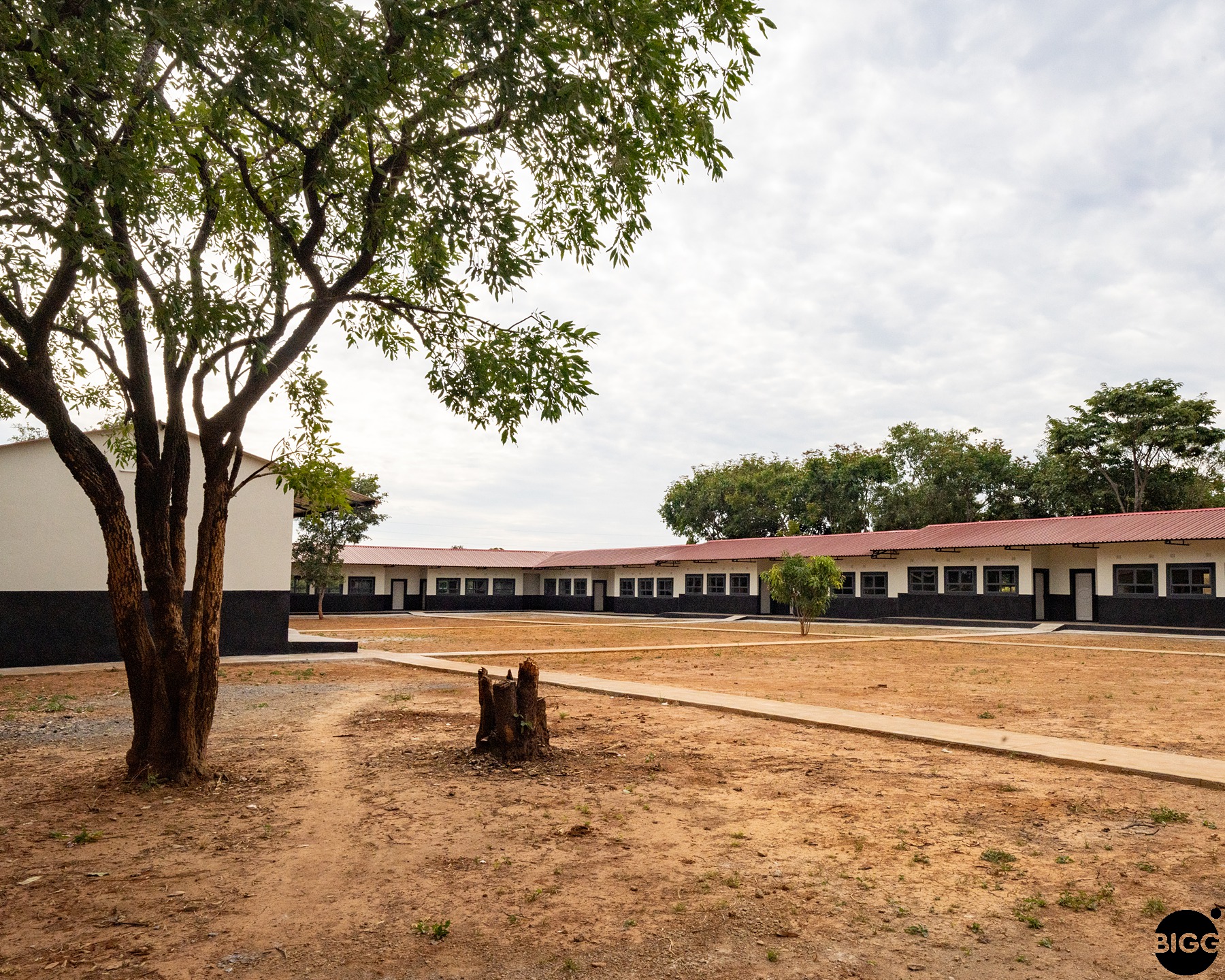
To understand why this is so exciting, I think it helps to have a little background on how schools are structured in Zambia.
Currently, there are three basic types of schools providing K-12 education. There are Government schools. While this is the strongest publicly available option, they tend to be underfunded and under resourced, and there aren’t that many of them. None of which is surprising given that Zambia is a very poor country. Just below that level, but often more accessible, are community schools that have sporadic assistance from the Government. They are also under resourced and over capacity.
The best education is private, and therefore only available to families with means. Since the orphanage opened its doors, the kids have been bussed to a private school where there is a strong focus on learning in English. We had the opportunity to observe a very impressive tutoring session on Geometry and Chemistry. And we spent considerable time talking to some of the kids about their dreams and their aspirations. They are dreaming of being lawyers, accountants, teachers, chefs. And they are receiving the kind of educational foundation that will help them achieve those goals.
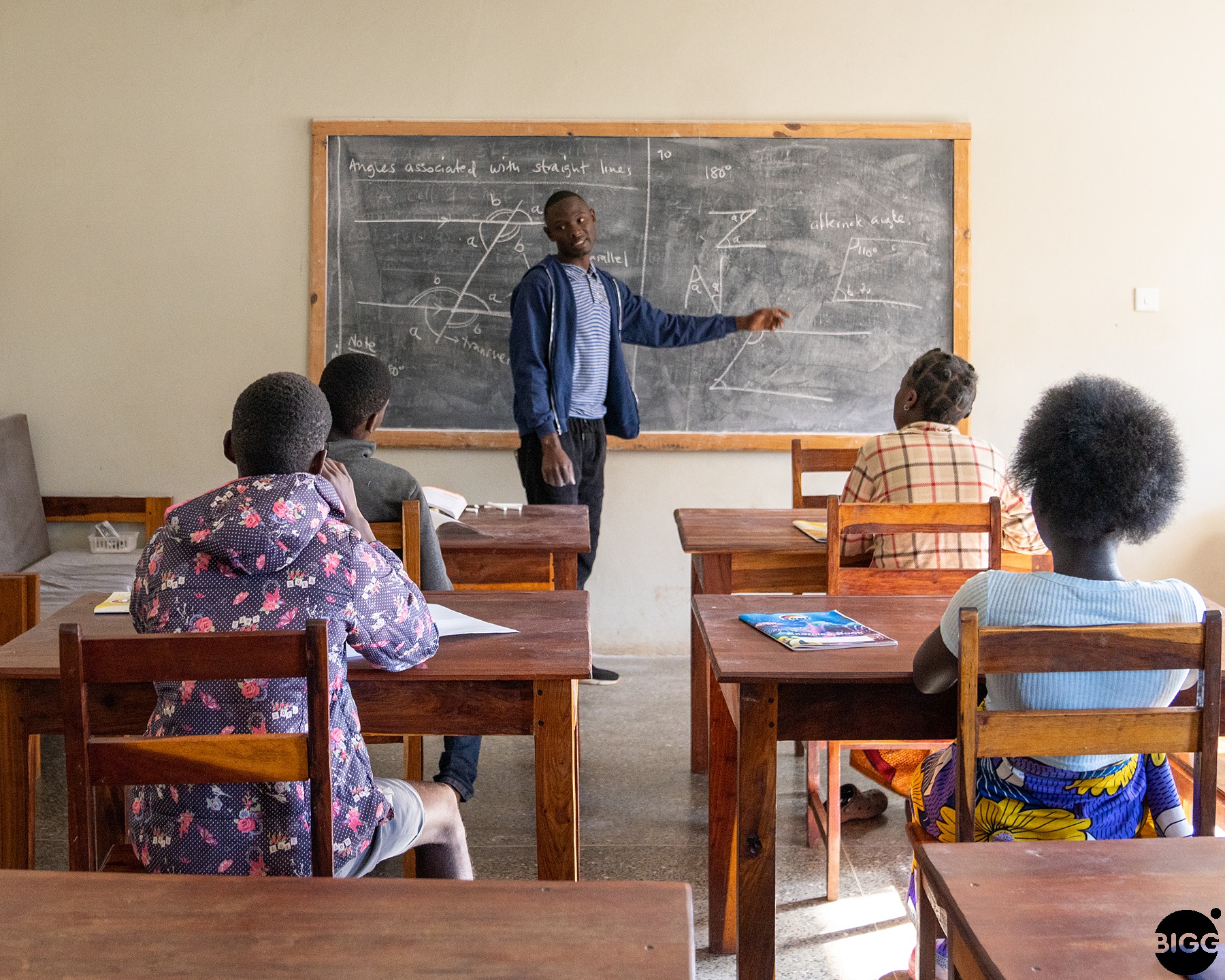
The plan for the new school is to bring that educational platform home, and to make it available to underprivileged and vulnerable children in the villages surrounding the orphanage.
When it is fully operational, there will be 16 classrooms and 8 teachers’ offices. The setting is tranquil, with plans for shaded walkways, benches and gathering areas.
In addition, there is a kitchen and a dining hall where they will provide breakfast and lunch to all the children. That is not a small consideration in a part of the world where it is not unusual to go to bed hungry.
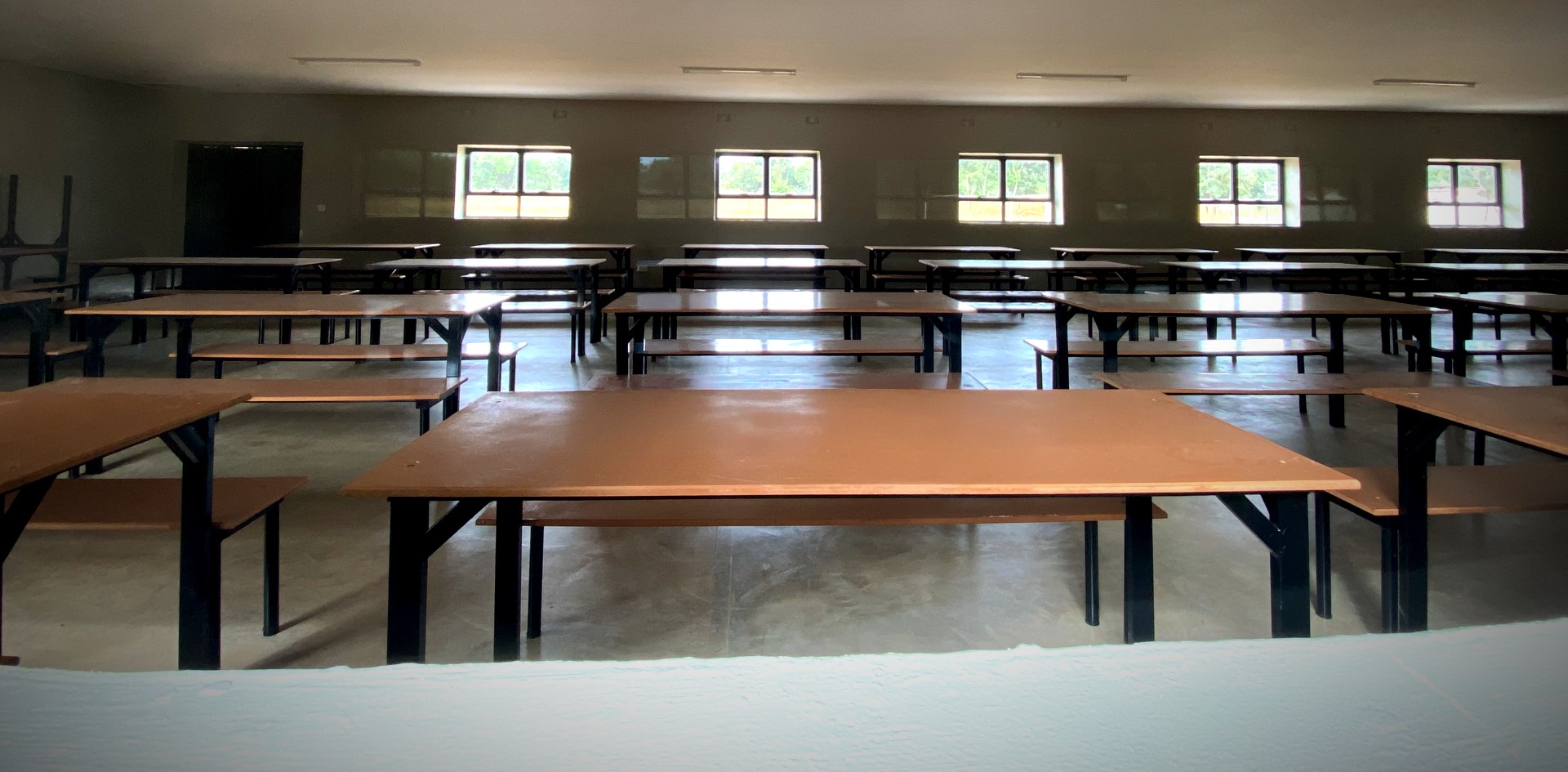
The new dining hall, as seen through the window.
They will have the capacity to educate 300 children. Assuming max occupancy at the orphanage of 112, that leaves 188 spots available to children from the area. There are approximately 2,500 small villages in a 12-20 km radius around the orphanage. Based on a survey LHI did in 2012/2013, they have identified somewhere between 4,000 and 6,500 school-aged children that might be candidates for the new school. Priority in admission will be given to orphans, and other vulnerable families.
They expect to receive their certification of the school by the State this year. And they will open their doors for the 2023/24 school year. The plan is to start small, with the youngest kids and just enough teachers. They will build from there, adding a grade a year. Which means that by 2035, the commute for all of the orphans will be a walk of less than 500 feet.
The Solar Power Station
Part of what makes this growth in the compound possible is that Living Hope International has installed a solar power station that powers both the coffee farm and the orphanage.
Because of the orphanage’s mission and not-for-profit status, they receive subsidized electricity (meaning lower cost) from the government. That, of course, is wonderful. The only issue is that is unreliable, both for the LHI and the region. Black-outs and brown-outs are regular occurrences that may last for hours or days.
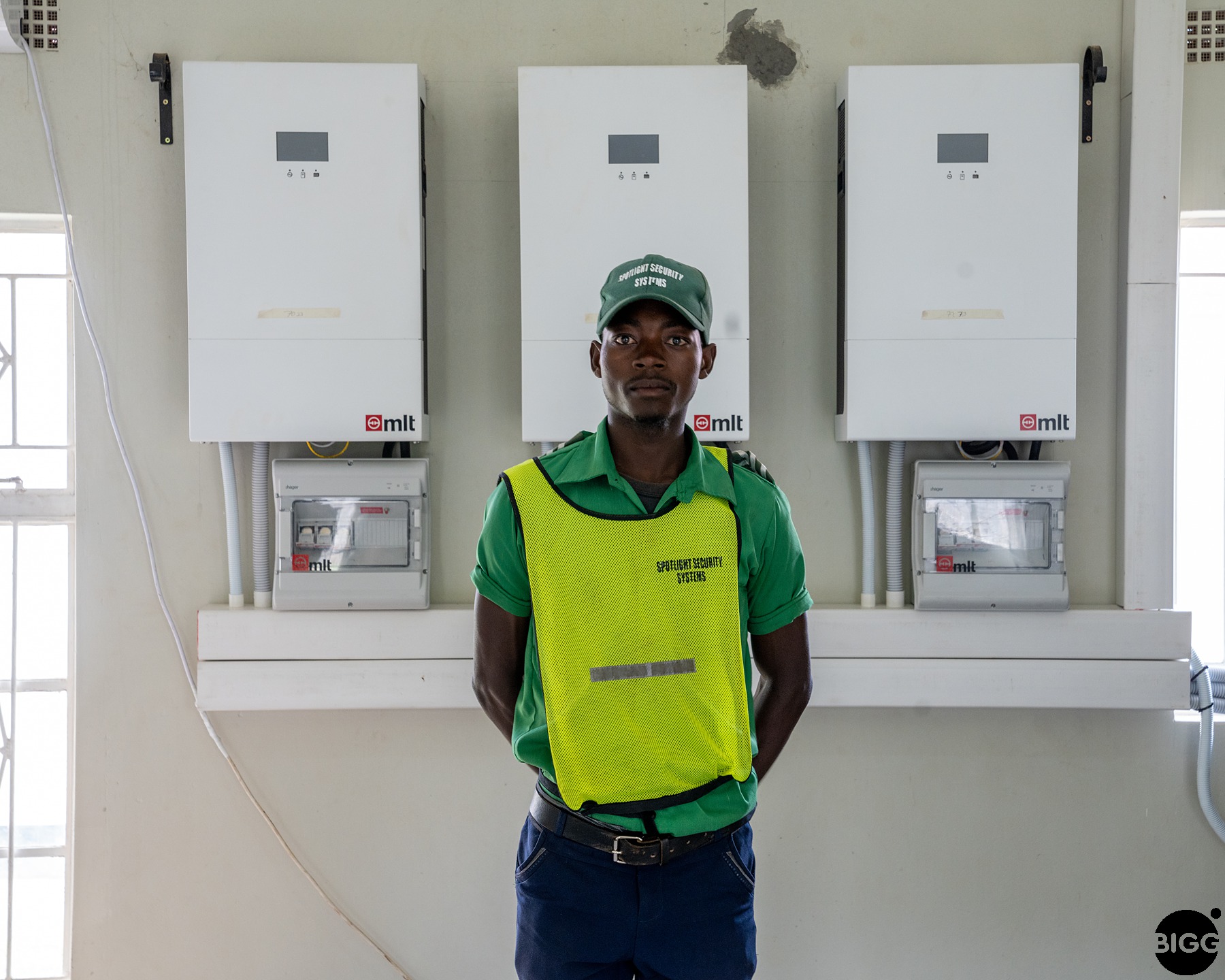
Although installed a generator before our last visit there in 2018, that has also proven to be unreliable. Access to parts and qualified service technicians is near non-existent.
Phase One of the solar power station occurred in 2021 when they acquired the first batteries. Phase Two, in 2022, was the installation of solar panels. The amount of investment in this new technology has been significant, but the impact is even bigger. Now, when the subsidized electricity goes out to both the orphanage and the coffee farm, the solar power station automatically kicks in, providing ample power to both.
In fact, it is so efficient at collecting solar energy that there had been some discussion about selling their surplus electricity back to the grid. But, because of the subsidy they receive from the state, they would be at risk of losing their not-for-profit status if they profited from their excess energy. So, instead, they are looking into ways that they might be able to provide power for the wider community.
The Soccer Field
And speaking of wider community access, the athletic field that we saw back in 2018 is alive and well and in regular (and joyful) use. We had the good fortune to watch a game between two community teams. It was festive and feisty in the stands, and the onlookers from Living Hope had reason to root for both teams, because there were players from among the older kids and the staff on both sides.
They have carefully tended the grass since our last visit. It is now a lot greener and more fully grown in. Even without irrigation. And they have added new bathrooms and changing rooms for the players and the public by the ball field.
Honestly, if you want to see the joy that bringing a community together can spark, take a look at these.
